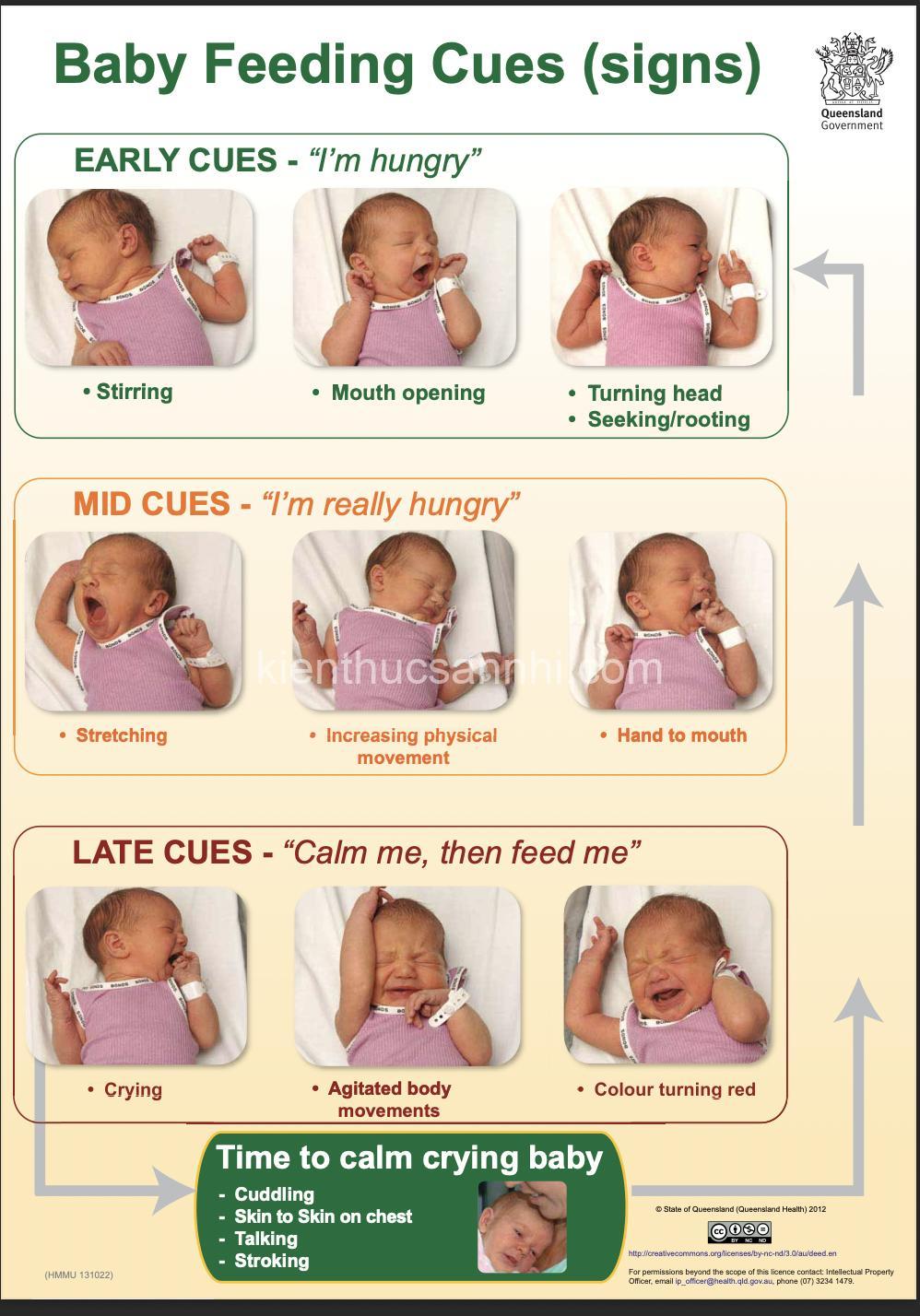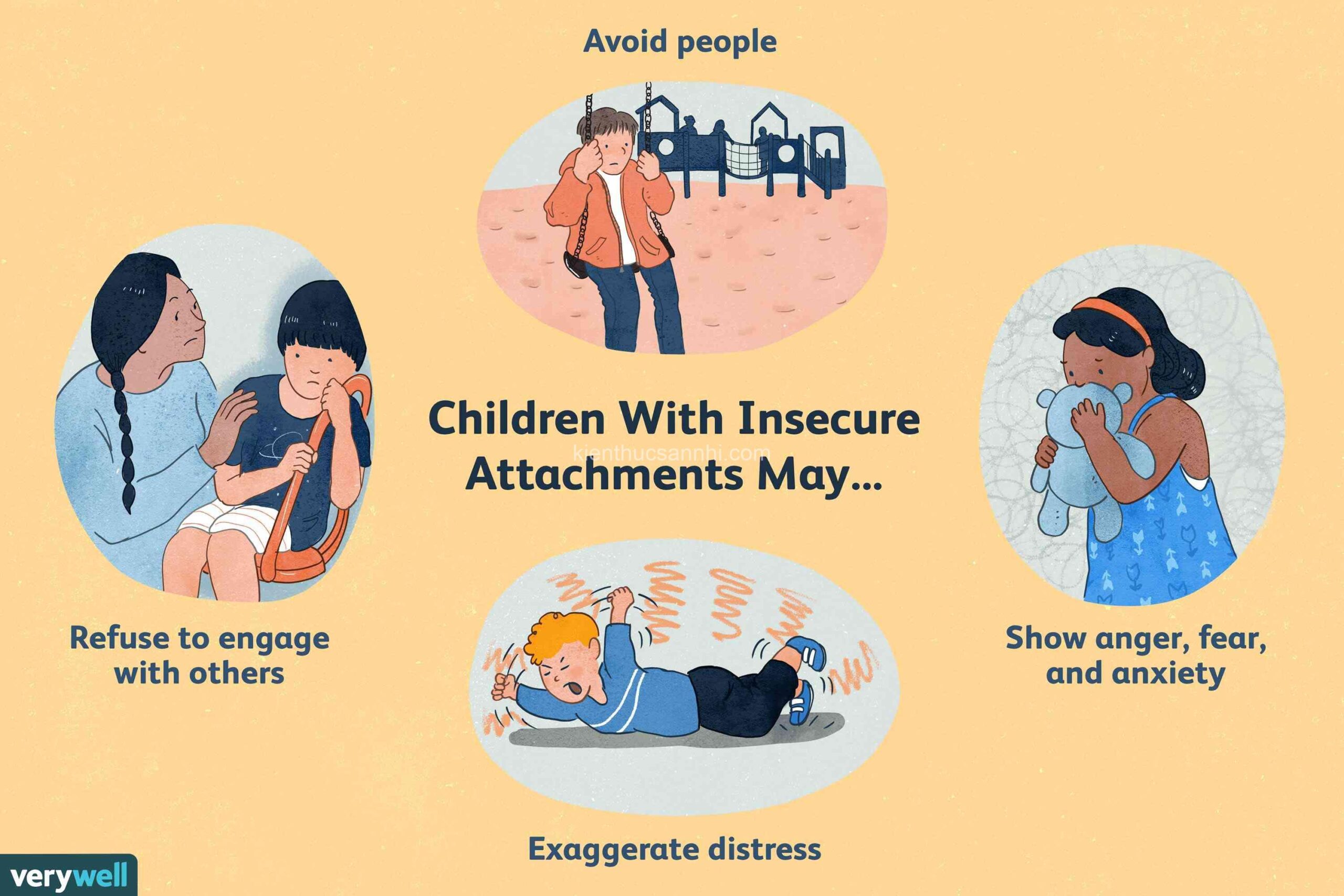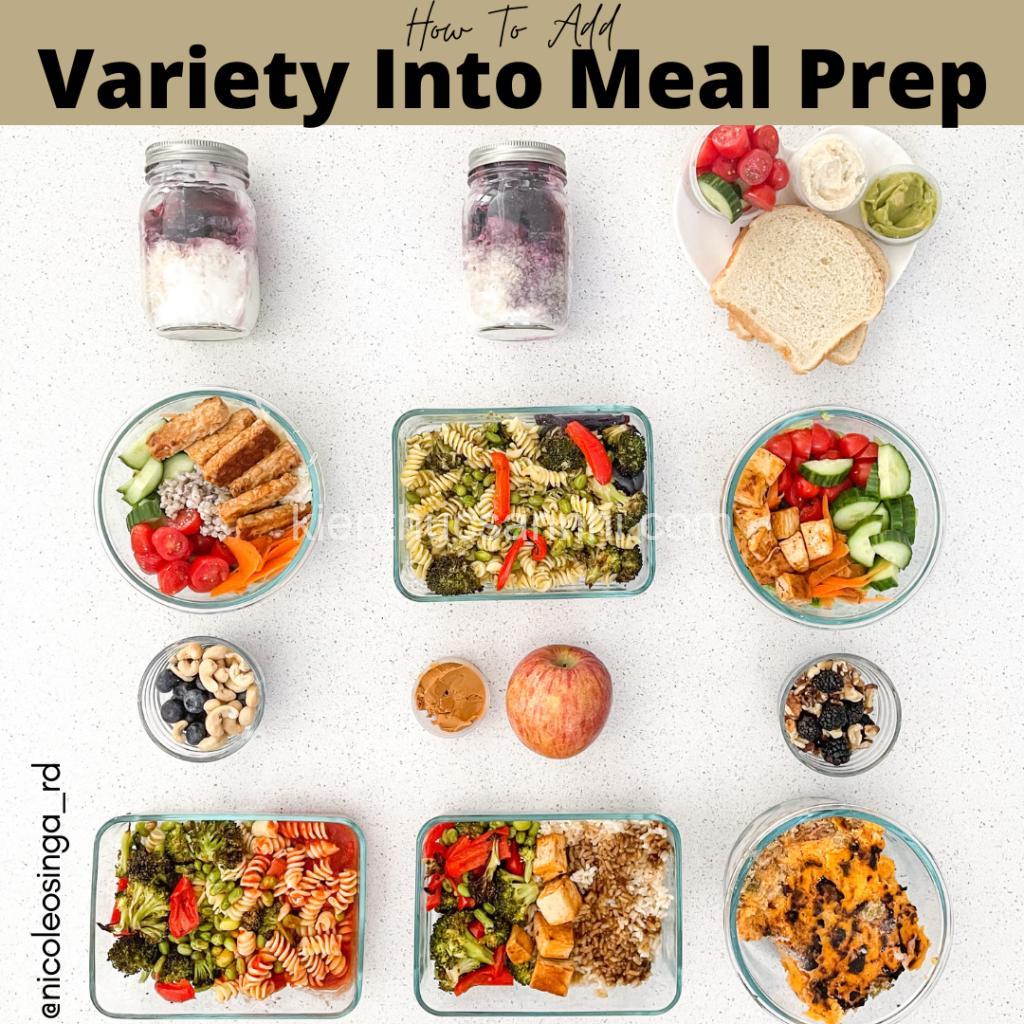
Recognize Baby Hunger Cues: Early Signals & Feeding On Demand. In today’s article, kienthucsannhi.com will explore with you in the most detailed and complete way. See now!
Decoding Your Baby’s Early Hunger Signals
Understanding your baby’s hunger cues is like learning a new language, but one that’s crucial for their well-being. It’s about observing their little body language and recognizing the subtle ways they’re telling you they need to eat.
Imagine a tiny explorer, your baby is ready to embark on a culinary adventure, but they need your guidance. Here’s how to decipher their early hunger signals:
-
Visual Cues: Picture a tiny explorer, curious about their surroundings. Look for these visual cues that signal their readiness for a feed:
- They might root around, opening their mouth and moving their head from side to side, searching for something to suck on.
- They might suck on their fingers or fists, getting a little taste of their own hands.
- You might hear lip-smacking sounds as they get ready for a feeding adventure.
-
Auditory Cues: Listen for these sounds that indicate your baby is hungry:
- You might hear fussing or crying, but remember that these sounds can also indicate other needs like a dirty diaper or tiredness. Pay attention to the tone and pitch of their cries to distinguish between hunger cries and other cries.
- They might make grunting sounds as they try to communicate their need for nourishment.
-
Physical Cues: Watch for these physical actions that suggest your baby is hungry:
- They might become more active and squirm around, or they might arch their back, showing their discomfort.
- They might bring their hands to their mouth, instinctively searching for something to satisfy their sucking urge.
- They might stretch their arms and legs, showing their growing hunger.
- They might suck on objects other than a nipple, demonstrating their desire to eat.
- They might become more alert and focus, their little minds working to figure out how to get their next meal.

Distinguishing Hunger from Other Needs
As a new parent, it’s easy to get caught up in deciphering your baby’s every cry. But remember, those tiny humans have a range of needs beyond food.
Here’s how to distinguish between hunger and other needs:
- Drowsiness: Look for signs of sleepiness, like yawning or closing their eyes. If your baby is sleepy, they might need a nap, not a feed.
- Burping Needs: Your baby might make burping sounds, arch their back, or look uncomfortable. If they seem gassy, a good burp might be all they need to settle down.
- Diaper Change Needs: If your baby is squirming, fussing, or looking uncomfortable, they might need a diaper change.
- Over-stimulation: Your baby might become agitated, fussy, and turn away from stimuli if they’re overstimulated. Give them a break from the excitement, maybe a quiet cuddle, and see if they calm down.
- Boredom: If your baby isn’t engaged, they might be staring blankly or fidgeting. It’s a sign they need a new activity to stimulate their little minds.
Remember, you know your baby best! Observe their behavior and try different solutions to determine the root cause of their fussing.
Feeding on Demand: A Responsive Approach
Think about how you feel when you’re hungry. You don’t wait for a specific time to eat; you eat when your body tells you it’s time. It’s the same for your baby.
Feeding on demand means offering your baby food whenever they show signs of hunger. It’s a responsive and natural approach to feeding that empowers your baby to self-regulate their intake.
Here’s why feeding on demand is important:
- Healthy Growth & Development: Feeding on demand allows your baby to get the nourishment they need for healthy growth and development. It also helps them establish a good feeding pattern that supports their individual needs.
- Strong Breastfeeding Relationship: For breastfeeding mothers, feeding on demand strengthens the bond between you and your baby. It allows your baby to dictate their feeding schedule, creating a more harmonious breastfeeding experience.
- Self-Regulation: Feeding on demand empowers your baby to control their food intake. They’ll learn to recognize when they’re full and stop feeding when they’re satisfied.
- Overfeeding or Underfeeding Prevention: By feeding on demand, you can avoid overfeeding or underfeeding your baby, ensuring they get the right amount of nourishment for their needs.
Understanding Different Feeding Methods
Choosing the right feeding method for your baby is a personal decision, but understanding the nuances of each method is vital.
-
Breastfeeding:
- Benefits: Breast milk provides optimal nutrition for infants. It’s packed with antibodies and nutrients that support healthy growth and development. Breastfeeding also offers a unique bonding experience for mothers and babies.
- Hunger Cues: Breastfeeding babies might show the same hunger cues as formula-fed babies, but they may nurse more frequently, especially in the early weeks. Pay close attention to their rooting, sucking, and other cues.
- Tips: Find a comfortable position for breastfeeding, seek support from lactation consultants, and practice patience and persistence.
-
Formula Feeding:
- Benefits: Formula feeding is a safe and nutritious alternative for babies who can’t breastfeed. It provides essential nutrients and vitamins.
- Hunger Cues: Formula-fed babies might show the same hunger cues as breastfeeding babies. Observe their sucking, rooting, and other signals.
- Tips: Choose a formula appropriate for your baby’s age, prepare the formula correctly, and follow the feeding guidelines provided by the manufacturer.
The Importance of Early Feeding
Early feeding is vital for your baby’s health and well-being. It’s not just about satisfying their hunger; it’s about nurturing their growth and fostering a strong bond with you.
Here’s why early feeding is so crucial:
- Healthy Weight Gain: Early feeding ensures your baby gets the nutrients they need for healthy weight gain and development.
- Adequate Milk Intake: Early feeding promotes consistent milk intake, ensuring your baby is receiving enough nourishment.
- Reduced Crying and Fussiness: Feeding your baby when they’re hungry reduces crying and fussiness, creating a happier and calmer environment for both of you.
- Strong Parent-Child Bond: Feeding your baby is a beautiful bonding experience. It creates a sense of intimacy, security, and connection that strengthens the parent-child bond.
Building a Strong Bond Through Feeding
Feeding time isn’t just about filling your baby’s tummy; it’s an opportunity to create a loving connection.
Here are some tips for building a strong bond through feeding:
- Relaxed Environment: Create a calm and comfortable feeding environment, free from distractions.
- Eye Contact & Interaction: Make eye contact with your baby during feeding, talk to them softly, and engage with them to foster a sense of connection.
- Skin-to-Skin Contact: Consider skin-to-skin contact during feeding. The warmth and closeness can help soothe your baby and strengthen your bond.
Seeking Professional Guidance
Raising a baby is a journey filled with learning and challenges. It’s okay to seek help when needed.
- Pediatrician or Lactation Consultant: Reach out to your pediatrician or a lactation consultant for personalized guidance on recognizing your baby’s hunger cues and choosing the best feeding method.
- Support Groups and Online Resources: Connect with other parents, join online support groups, and explore reliable resources for additional information and support.
- Trust Your Instincts: Remember, you know your baby best! Trust your instincts, observe their behavior, and don’t hesitate to seek help if you have any concerns.
Conclusion
Understanding your baby’s hunger cues is essential for their health and development. By recognizing their early signals, you can ensure they get the nourishment they need, establish healthy eating habits, and foster a strong bond with them.
Remember, feeding on demand is a natural and responsive approach. It allows your baby to control their food intake and promotes a harmonious feeding experience.
For more information on raising a healthy and happy baby, visit kienthucsannhi.com. And don’t forget to share your experiences and ask questions in the comments below!
What are the different types of baby cries?
Answer: Baby cries can signal various needs. Recognizing different types of cries can help you understand your baby’s needs better. For example, hunger cries tend to be rhythmic and persistent, while pain cries are sudden and high-pitched.
How often should I feed my baby?
Answer: There is no fixed feeding schedule. Feed your baby on demand, meaning whenever they show signs of hunger. This is especially important in the early weeks and months as your baby establishes their feeding pattern.
What are the common signs of overfeeding?
Answer: Overfeeding can lead to discomfort and digestive issues. Signs of overfeeding include spitting up, vomiting, and refusing to eat.
How can I tell if my baby is getting enough milk?
Answer: Your baby should have at least six wet diapers and several bowel movements daily. They should also gain weight consistently. If you have concerns, consult with your pediatrician.
My baby doesn’t seem to want to eat. What should I do?
Answer: If your baby is refusing to eat, consider possible factors such as illness, discomfort, or changes in their feeding routine. Consult with your pediatrician to rule out any medical concerns.





